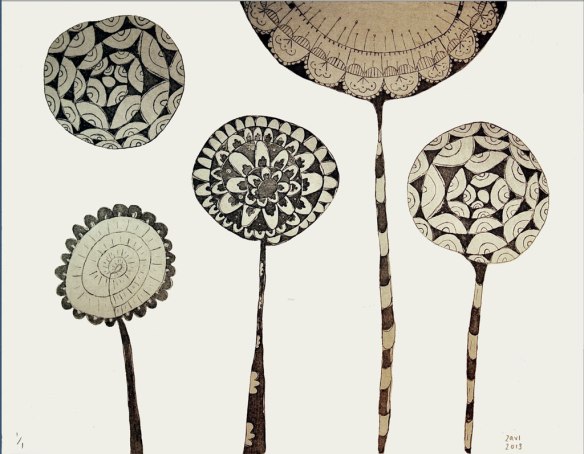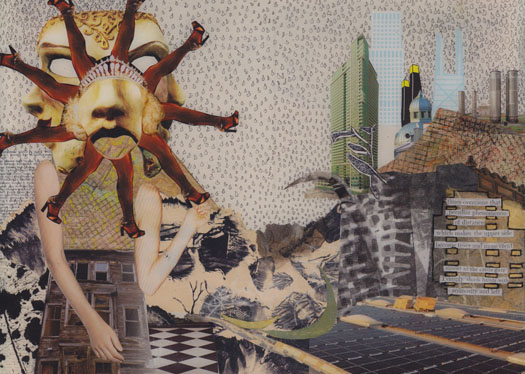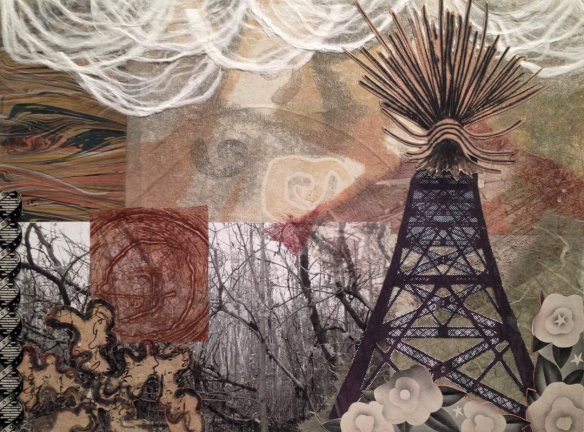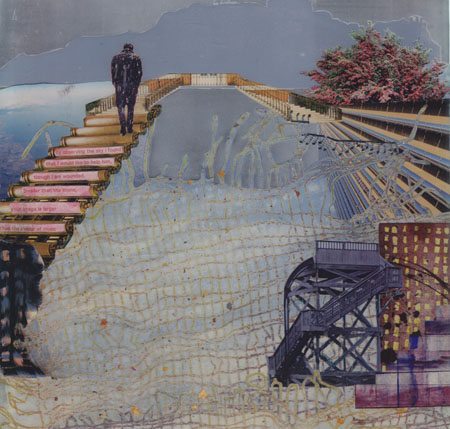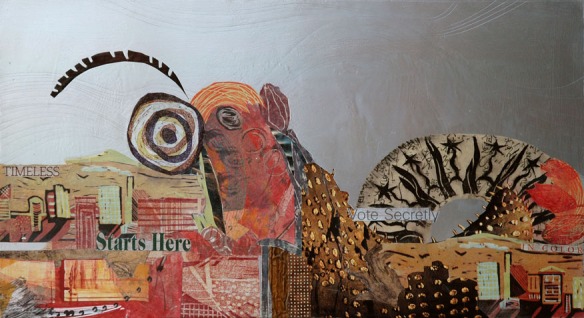Laurie Zinkand-Selles’s work considers time and memory, contrasting the brevity of our human experience with that of historical/architectural structures and environments. Her recent series of photo based screen prints, draws on historical images of Toronto and considers the evolving nature of the city. They are narratives of the past within an architectural or geographical context. Her work is inspired by travel, photography, appropriated print imagery, pattern and texture. These are used to suggest the passage of time and to consider the layers of memories that accumulate, collectively and individually, in a given place or time.
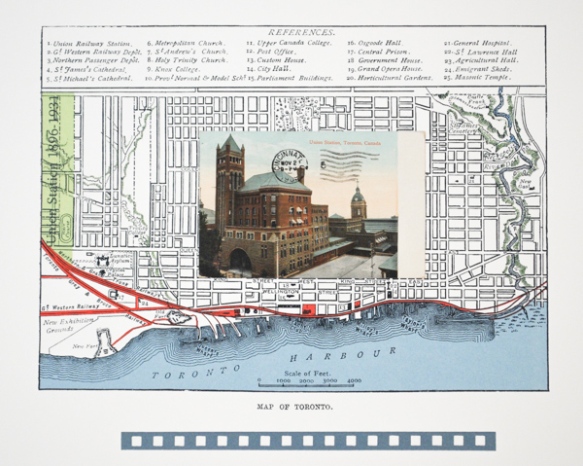
Lost Station II, 2015. Photo-based screen print, coloured pencil, collage (found postcard), Maidstone. Image, 10”h x 12” w. Paper, 16.5 h x 19”w.
Biography
Laurie Zinkand-Selles is a visual artist living in Toronto. She was born in Boston, Massachusetts, and raised in Iowa where she received her BA in Fine Arts. She moved Toronto in 1981, where she studied at OCAD and at George Brown College. She has been exhibiting her work since 1997 and became a member at Open Studio in Toronto, in 2007. Her work has been shown in numerous group and solo exhibitions and is included in private and corporate collections in Canada, the United States and the UK, including The National Bank of Canada.
To view more examples of Laurie Zinkand-Selles’s work or to contact the artist, visit her web site.

